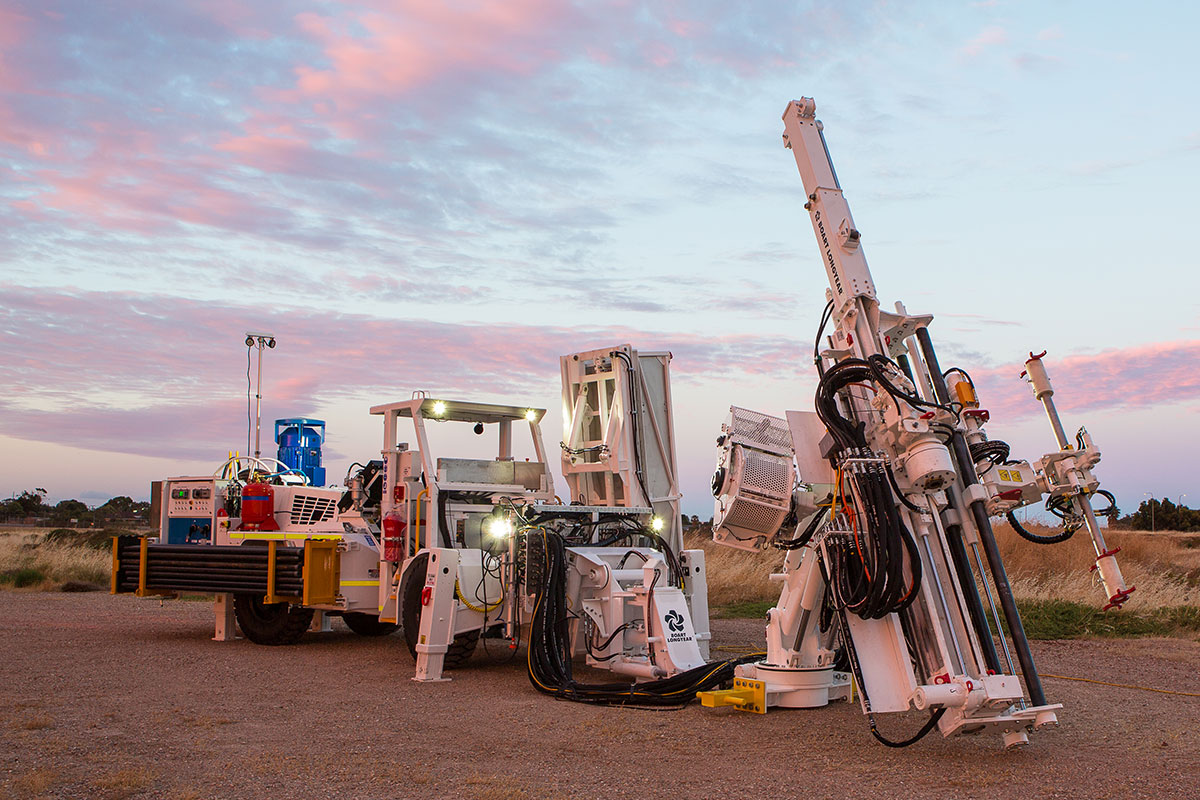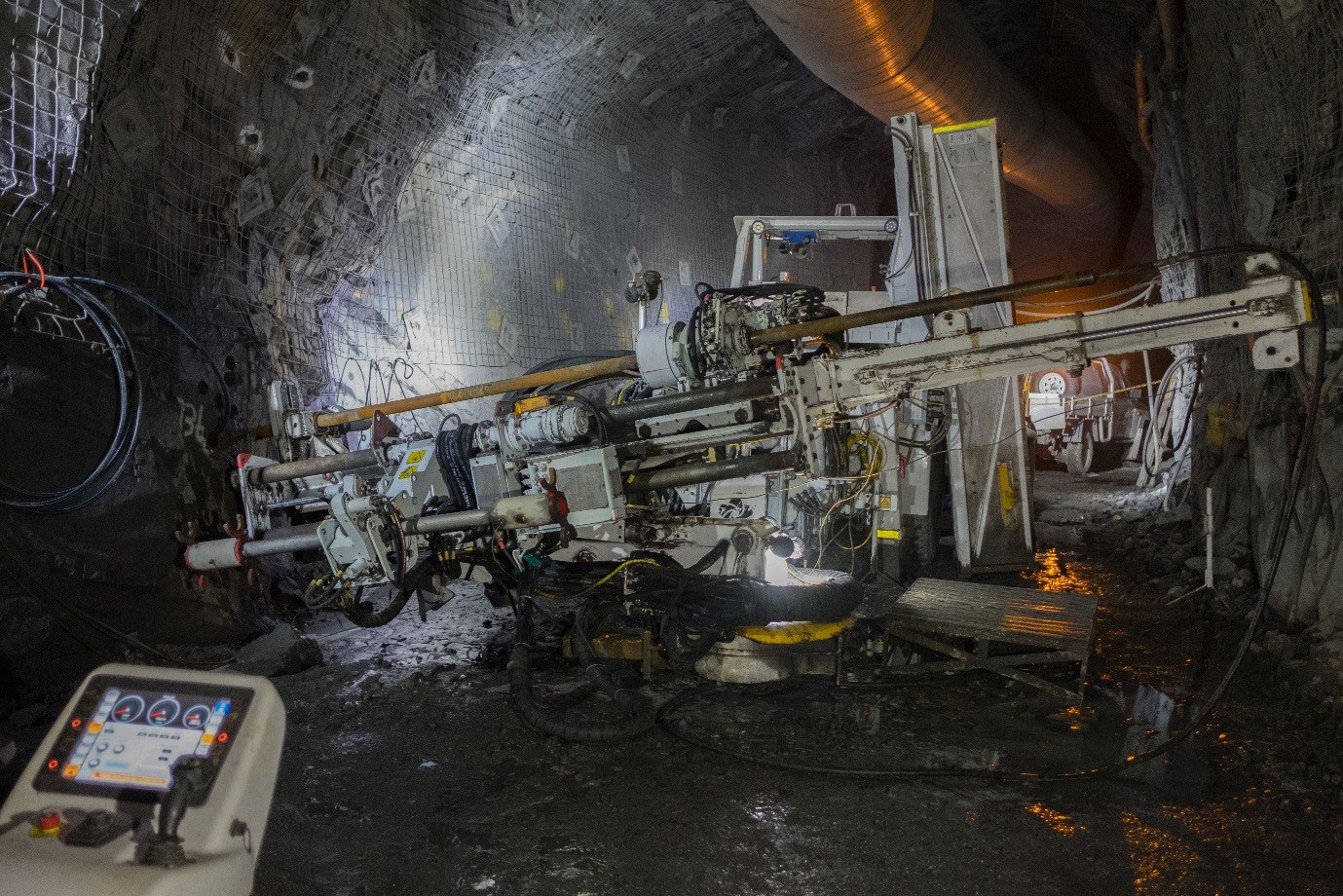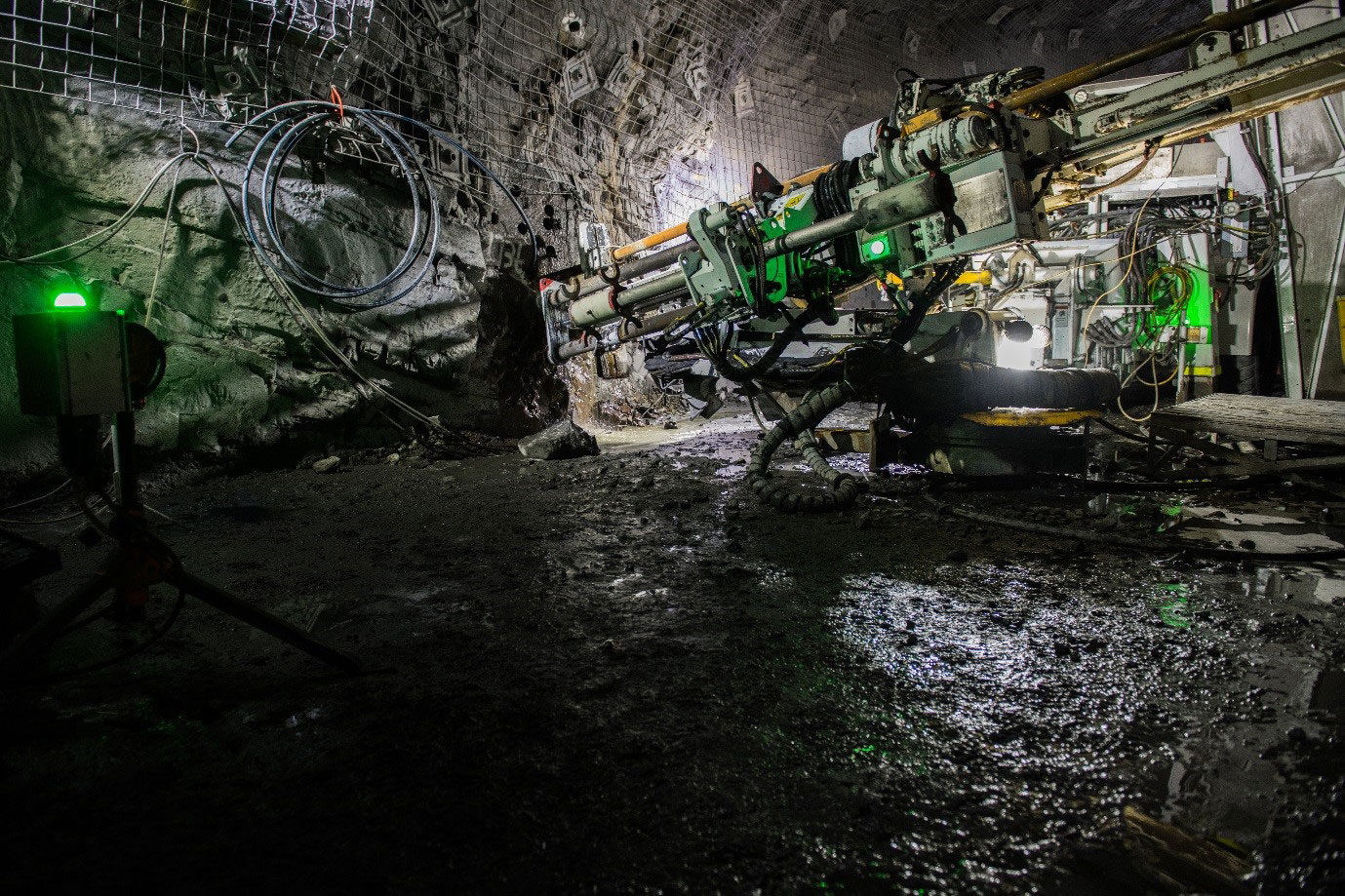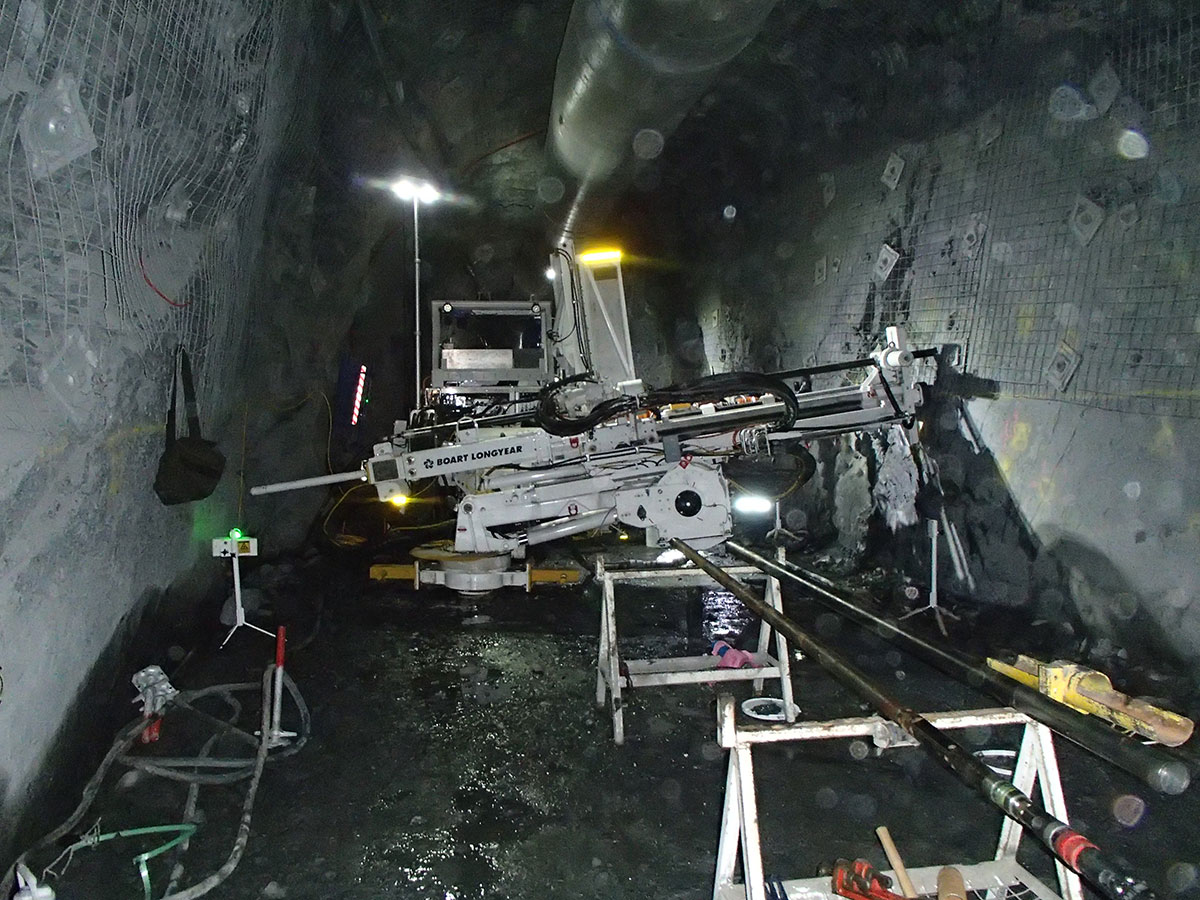ERKUNDUNG
22. August 2018
Wie Drilling Services zusätzliche zwei Meter pro Stunde erreicht
MDR500
Dieser Artikel erschien ursprünglich in GeoDrilling InternationalAusgabe vom Oktober 2018, Seiten 16-17.
Die MDR500 ist eine mobile Diamantbohranlage für Untergrund, die exklusiv für Boart Longyear ™ Drilling Services entwickelt wurde. Es nutzt die kommende LMi Power- und Control-Schnittstelle und ist mit einem 500-Meter-Stangenlager (NQ-Stangen) ausgestattet, das es zu einer autarken mobilen Bohranlage macht.
Der MDR500 war das langfristige Kind von Geoff Moroney (Drilling Services Asia Pacific) und John Kirkwood (Drilling Services Asia Pacific Regional Director). Das Projekt erhielt den Startschuss für das dritte Quartal 2016, nachdem Marktuntersuchungen gezeigt hatten, dass in Teilen des australischen Markts der Wunsch nach einer unterirdischen Diamantbohranlage mit mittlerer Tiefe bestand, die größtenteils autark war und schnell von hier aus zurückweichen konnte Loch zu Loch. Das Konzeptdesign begann Anfang Dezember 2016, und Anfang Dezember 2017 wurde der erste fertiggestellte Rig aus der Werkstatt herausgefahren.
Die Grundlage der Idee war, die bestehenden MDR150 der australischen Flotte in MDR500 umzuwandeln. Der ursprüngliche MDR150 wurde fast zehn Jahre zuvor von Geoff Moroney und Nathan Kaesler (jetzt Global R & D Engineering Manager) entworfen und gebaut. Damals arbeitete Geoff mit Werkzeugen und Nathan war ein neuer, begeisterter neuer Ingenieur bei Boart Longyear. Der MDR150 besteht aus einem 75-kW-Kraftpaket und einem beweglichen Vorschubrahmen der Serie 400, der am Teleskopausleger eines sehr soliden Normet-Trägers montiert ist und mit 144 m Bordstangenlager ausgestattet ist. Es eignet sich hervorragend für kurze, kurze Bohrungen an Stellen, an denen das manuelle Handling von Stangen in den Bohrstrang erlaubt ist. Der MDR500 erfüllt die steigende Nachfrage auf dem Markt nach einem mobilen Bohrgerät für tiefere Bohrungen in Verbindung mit dem immer stärker werdenden Druck, die manuelle Handhabung zu reduzieren. Zusammen mit dem MDR150, das fast 10 Jahre alt ist, die meisten Umbauarbeiten erforderlich macht und mehrere Schlüsselsteuerungssystemkomponenten veraltet sind, war es sinnvoll, diese MDR150 in neue MDR500 umzuwandeln.
Da das Projekt mit den ersten Prototypentests der bevorstehenden unterirdischen LMi-Powerpack-Plattform zusammenfiel, fiel es der Designgruppe leicht, das neue 110-kW-LMi-Design zu wählen, um die Bohrmaschine, die aus einem Boart Longyear HQ-Hochgeschwindigkeitsbohrkopf besteht, anzutreiben und zu steuern montiert auf einem 700er Futterrahmen und unter Verwendung eines standardmäßigen unterirdischen Rod Handlers. Nach der Entscheidung für das Basiskonzept wurde das Projekt zu einer komplexen Verpackungsaufgabe für das Asia Pacific Drilling Services Engineering-Team. Suche nach Möglichkeiten, alle LMi-Komponenten zusammen mit den 500 m langen Stäben auf den Träger zu schieben und dann einen Arm zu konstruieren, der den viel schwereren Bohrer an der Vorderseite der Bohranlage halten kann, während er dennoch eine volle horizontale 360-Grad-Achse und plus 90 bis negative 90-Achse zulässt Grad der zu erreichenden Bohrwinkel war keine leichte Aufgabe.
Ein innovatives Konzept von Stewart Jones, bei dem der vordere Stangenbehälter während des Transports über der Vorderachse sitzt und dann während des Einsatzes auf beiden Seiten des Riggs vertikal geneigt werden kann, was ein ergonomisches Stangenhandling ermöglicht, war ein zusätzlicher Bonus auf dem Weg. Das Projekt war sicherlich nicht ohne Herausforderungen, mit einer gewissen Verstärkung des Normet-Chassis und einer größeren Vorderachse, die erforderlich ist, um die wesentlich höhere Last aufzunehmen, die jetzt von der Vorderseite der Maschine getragen wird.
Aufgrund des engen Zeitrahmens für das Projekt mussten Design und Bau gleichzeitig stattfinden, und das Team in der Werkstatt unter der Leitung des leitenden Installateurs Darren Watson leistete hervorragende Arbeit beim Bau und der Montage des ersten Riggs, obwohl er nur eine Hälfte hatte -fertige Entwürfe und Teilzeichnungen am Anfang. Das Design der Schläuche für das MDR500 war eine Mammutaufgabe, da der vordere Arm viel Bewegung erfordert, und das Werkstatt-Team war entscheidend für die Konstruktion und den Bau dieses Projekts. Ein Großteil davon wurde in der Werkstatt am Rigg entworfen.
Als sich das schwere Heben im Auftrag des mechanischen Teams kurz vor dem Abschluss befand, war der Konstruktionsstab bereits an die damaligen Produkte für elektrische und Steuersysteme von Bernie Chia und Glen Verrall übergeben worden, um dieses Rig mit aller Kontrolle zum Leben zu erwecken Sowohl die Setup-Funktionen als auch der Bohrer werden entweder über die Touchscreen-Benutzeroberfläche in der Kabine des Trägers oder über das elektronische Bedienfeld von LMi abgewickelt. Glen übte seine Magie, um die zusätzlichen MDR-Funktionen nahtlos in eine modifizierte Version der LMi-Software zu verweben.
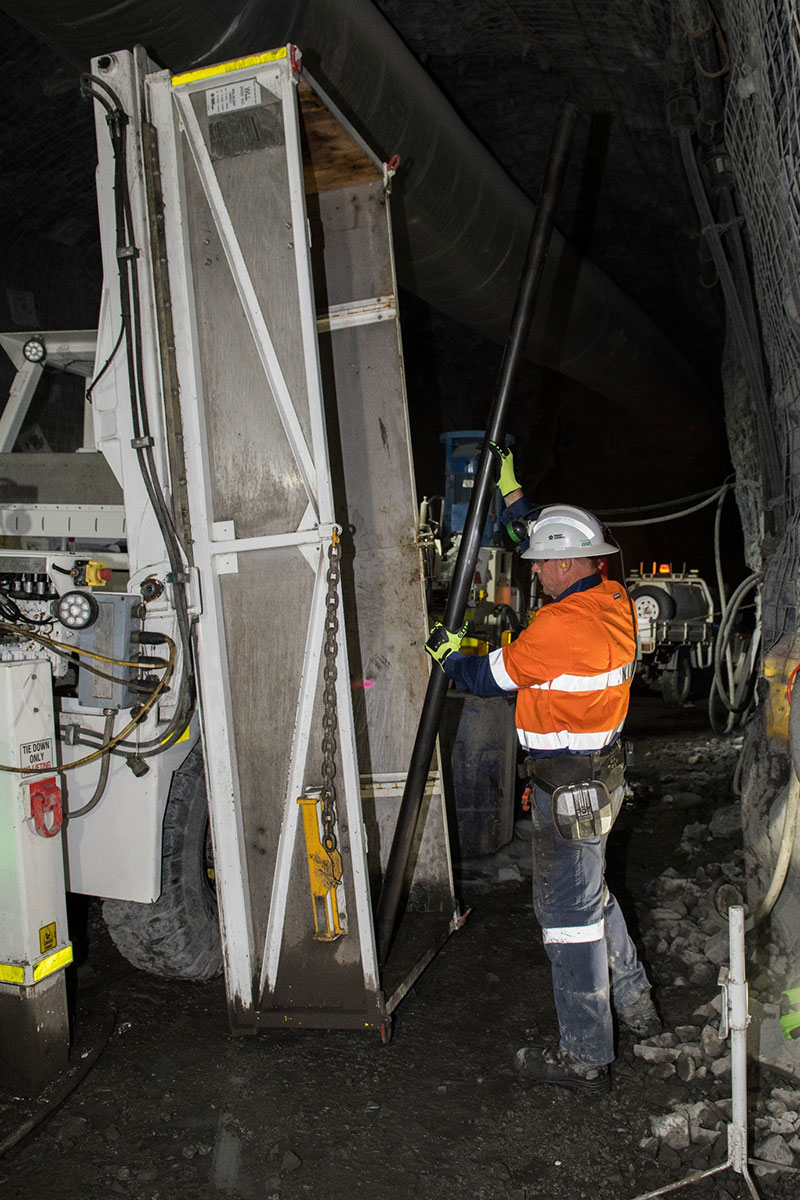
Während des gesamten Projekts stand das Ingenieurteam in engem Kontakt mit den Endbenutzern vor Ort, hauptsächlich Matt Barnes, der das Betriebsteam der MMG Dugald River Mine in Queensland leitet, wo die ersten beiden MDR500-Einheiten eingesetzt wurden. Diese Zusammenarbeit fand in jeder Phase des Projekts statt, angefangen mit einer Betriebsbesichtigung durch das Engineering-Projektteam, um mit Matt und seinem Team die Anforderungen an das Rig zu ermitteln, um sicherzustellen, dass das Endergebnis genau das war, was erforderlich war. Das Engagement des Teams wurde durchgehend fortgesetzt, wobei Matt ein unschätzbarer Sachverständiger war und auch ein wesentlicher Teilnehmer an Designprüfungen und Risikobewertungen war. Das Projekt wurde Anfang Januar 2018 mit einem Engineering-Standortbesuch abgeschlossen und dann im März, gleichzeitig mit dem betriebsbereiten Einsatz jedes MDR500 an Dugald River. Der Hauptzweck dieser Besuche besteht darin, die Bediener über die Merkmale des neuen Bohrgerätes zu schulen und zur Verfügung zu stehen, um etwaige Probleme sofort zu beheben, wenn sie auftreten. Glücklicherweise gab es keine wesentlichen Probleme und Glen konnte die Fahrten als wertvolle Quelle für Rückmeldungen von Bohrern für die weitere Entwicklung von LMi-Software nutzen.
Das erste MDR500 kam vor Ort an und nach den routinemäßigen Inspektionen vor Ort wurde das erste Loch ohne Probleme gebohrt. Dies war nicht zuletzt auf die erheblichen Beiträge des Operationsteams während des gesamten Projekts und die schnelle Übernahme der neuen Bohranlage durch die Bohrmaschinen zurückzuführen. Die Bohrer am Dugald River haben das neue LMi-Steuersystem des MDR500 schnell gefunden und ihre Akzeptanz für die Schnittstelle war sehr erfreulich. Das Dugald River-Team übertraf schnell seine mit dem vorherigen MDR150 erreichten Meter-Rate und erreicht nun durchschnittlich 2 zusätzliche Meter pro Stunde.
Ein dritter MDR500 steht im Adelaide-Workshop kurz vor dem Abschluss und wird nach seiner Fertigstellung als Möhre verwendet, um neue Arbeiten an mehreren potenziellen Standorten anzuregen, die derzeit diskutiert werden. Wenn die Marktnachfrage nach wie vor stark ist, ist beabsichtigt, die alternde Flotte von 8 verbleibenden MDR150-Flotten in den nächsten Jahren kontinuierlich in MDR500-Flotte umzuwandeln, wobei die Möglichkeit besteht, weitere Carrier zu gewinnen, um bei Bedarf noch mehr zu machen.
Der MDR500 war und ist nach wie vor ein Erfolg auf diesem Gebiet und ein Schlüsselinteresse für das Asia Pacific Drilling Services-Team bei der Aushandlung von Untertagebohrverträgen. Der Erfolg des Projekts war offensichtlich das Ergebnis harter Arbeit, aber auch der hervorragenden Teamarbeit und des gemeinsamen Einsatzes der verschiedenen Funktionsgruppen von Boart Longyear, wobei viel mehr Menschen als hier erwähnt eine wichtige Rolle im Projekt spielten .
Weitere Informationen zu den unterirdischen Bohrfunktionen von Drilling Services.
LERN MEHR


